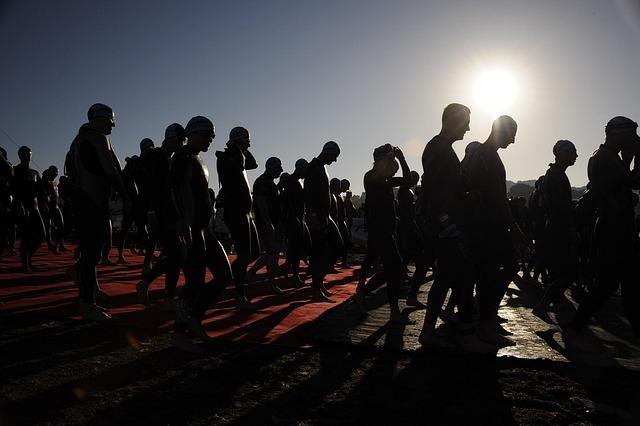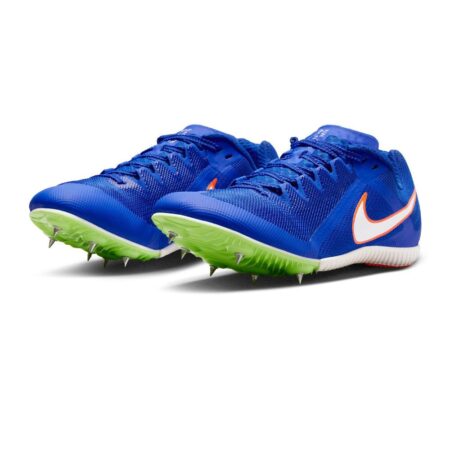Race walking may not command the same spotlight as sprinting or marathon running, but it holds a distinctive place in Olympic athletics. As one of the lesser-known track and field events, race walking demands a unique combination of endurance, technique, and discipline. In this article, we explore what makes race walking an official Olympic sport, its defining rules, and the challenges athletes face as they strive for gold under the watchful eyes of judges and spectators alike.
Race Walking at the Olympics Understanding the Rules and Techniques Behind the Sport
Race walking, a staple in the Olympic athletics lineup since 1904, combines endurance, technique, and strict rule enforcement, setting it apart from running events. To qualify as a legal race walk, athletes must adhere to two fundamental requirements: one foot must always be in contact with the ground, and the leading leg must straighten from the moment of first contact until it passes beneath the body. Judges stationed along the racecourse vigilantly monitor competitors for form violations, which can lead to warnings or disqualification. This delicate balance between speed and technique demands exceptional focus, as the slightest misstep can cost an athlete their standing.
The sport’s unique dynamics are reflected in the athletes’ distinctive hip-swinging gait, a technique developed to maximize stride length while maintaining continuous ground contact. Distances range from 20 kilometers to the grueling 50-kilometer event, often requiring two to four hours of sustained effort. Below is a quick overview of the key race walking rules:
- Continuous ground contact: No visible loss of contact with the track.
- Straightened front leg: Must remain straight from initial touchdown until vertical.
- Judging and penalties: Three warnings from separate judges lead to disqualification.
- Technique over speed: Maintaining form is critical even at high pace.
| Event | Men’s Distance | Women’s Distance | Typical Winning Time |
|---|---|---|---|
| Olympic Race Walk | 20 km & 50 km | 20 km | 1h 20m – 3h 40m |
The Physical and Mental Demands of Race Walking What It Takes to Compete at the Highest Level
Competing at the highest level in race walking demands a unique combination of physical endurance and technical precision. Athletes must maintain a continuous ground contact with one foot while keeping the leading leg straightened from first contact until it passes under the body. This rule requires not only rigorous training to perfect form but also intense cardiovascular conditioning to sustain speeds often exceeding 7 miles per hour over distances of 20 to 50 kilometers. The sport’s grueling nature pushes competitors to their physical limits, blending long-distance stamina with explosive bursts of pacing-emphasizing agility and core strength to prevent penalties and maintain legal technique under scrutiny from judges.
On the mental side, race walkers face the challenge of balancing focus and strategic pacing across hours of competition. Maintaining technique while battling fatigue requires a high level of concentration, as any lapse can result in disqualification. Psychological resilience is paramount, especially in grueling events where athletes navigate environmental conditions, crowd pressure, and physical pain. The mental game includes:
- Visualizing flawless technique to avoid form infractions
- Managing pain and fatigue over extended periods
- Strategically timing surges to outpace rivals without sacrificing form
- Handling judgment scrutiny with composure to prevent warnings
| Demand | Key Attribute | Impact on Performance |
|---|---|---|
| Physical Endurance | Cardiovascular stamina | Maintains pace, delays fatigue |
| Technical Precision | Consistent legal form | Avoids penalties and disqualification |
| Mental Focus | Concentration under pressure | Maintains efficiency and strategy |
| Psychological Resilience | Stress management | Supports perseverance during tough moments |
Training Tips and Expert Advice for Aspiring Race Walkers How to Improve Form and Endurance
Mastering race walking demands both technical precision and physical endurance. One of the most crucial elements to focus on is maintaining proper form: keeping one foot in contact with the ground at all times and ensuring the leading leg straightens from the moment of first contact until it passes under the body. Incorporating drills such as high knees, heel-toe walks, and posture alignment exercises into daily routines can enhance muscle memory and promote efficiency. Expert coaches recommend using video analysis to identify subtle form breakdowns, which can cost valuable time during competition and increase injury risk.
Building endurance is equally essential. Rather than jumping straight into long-distance workouts, a strategic approach involving interval training, tempo walks, and gradual mileage increases helps condition the body without overtaxing it. Nutrition and recovery also play pivotal roles; hydration, balanced meals rich in complex carbohydrates, and quality rest accelerate performance gains. The table below highlights a sample weekly training split for intermediate race walkers aiming to boost both form and stamina:
| Day | Focus | Workout |
|---|---|---|
| Monday | Form Drills | Technique loops + video review |
| Wednesday | Interval Training | 5x1km at race pace with rest |
| Friday | Endurance Walk | Long steady pace, 10-12 km |
| Day | Focus | Workout |
|---|---|---|
| Monday | Form Drills | Technique loops + video review |
| Wednesday | Interval Training | 5x1km at race pace with rest |
| Friday | To Wrap It Up
As race walking continues to challenge athletes with its unique blend of endurance and technique, its place on the Olympic stage remains a testament to the sport’s distinct nature and global appeal. Understanding the rules and nuances behind this demanding event provides greater appreciation for the skill and discipline required to compete at the highest level. Whether you’re a casual observer or an aspiring athlete, race walking offers a fascinating glimpse into the diversity of Olympic competition. |





